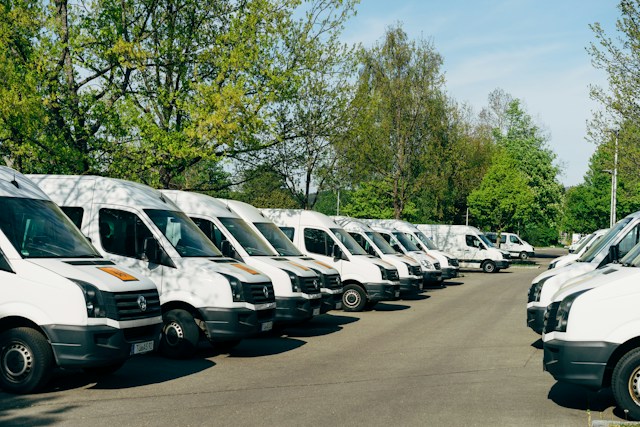Controlling fleet expenses is crucial for businesses that rely on vehicles. Effective management can help reduce costs, improve efficiency, and boost your profits. Here are some strategies to better control fleet expenses:
Regular Vehicle Maintenance
Maintenance Routine
- Implement a maintenance schedule to keep vehicles in optimal condition.
- By regularly checking your vehicles, you will be able to identify and address issues early on, which will, in turn, prevent high costs later on.
- Ensure that all drivers are trained on how to properly report maintenance issues so that in the case of a breakdown, it can be dealt with efficiently.
Vehicle Lifecycle Management
- Evaluate when to retire or replace older, less fuel-efficient vehicles to reduce maintenance and fuel costs.
- Consider leasing instead of buying to reduce upfront costs and ensure access to newer, more efficient vehicles.
Manage Tires and Tire Maintenance
- Properly inflate tires to the manufacturer’s recommended pressure to improve fuel efficiency.
- Rotate and balance tires regularly to extend their lifespan and reduce replacement costs.
Implement a Fuel Management Program
- Use a fuel card to track and control fuel expenses.
- Choose fuel-efficient vehicles and promote eco-friendly driving habits to reduce fuel consumption.
- Monitor fuel prices and take advantage of bulk purchasing when possible.

To register for your fuel card all you have to do is answer a few questions! Image: radius
Driver Training and Monitoring
Provide driver training programs that focus on safe and fuel-efficient driving techniques. These can be backed up with telematics systems to monitor driver behaviour, including speeding, idling, and harsh braking. To make sure drivers feel incentivised, reward drivers who demonstrate responsible driving habits.
Route Optimisation
Use route planning software to optimise routes and minimise mileage. Alongside this, reduce unnecessary trips and idling time. Implementing real-time traffic and GPS systems which avoid congestion and delays can help you to achieve these.
Choose the Best Insurance
It’s worth taking a bit of time to shop around for competitive insurance rates. You’ll find that implementing safe driving practices which can be monitored by something like a black box will let you qualify for lower insurance premiums.
Expense Tracking and Reporting
- Utilise fleet management software to track expenses, monitor performance, and generate detailed reports.
- Analyse reports to identify cost-saving opportunities and areas for improvement.
Utilise Technology
To ensure these safe driving practices, consider investing in telematics and GPS systems to monitor vehicle location, maintenance needs, and driver behaviour. To further this, implement IoT (Internet of Things) solutions for real-time tracking and data analysis.
Reduce Idling and Unnecessary Engine Use
- Encourage drivers to turn off engines to save fuel.
- Use auxiliary power units (APUs) for heating, cooling, and electricity without running the main engine.
Regularly Review and Adjust Strategies
Continuously monitor and evaluate your fleet management strategies and be prepared to adapt to changing circumstances, such as fluctuating fuel prices or new technologies.
Consider Eco-Friendly Alternatives
It might be worth evaluating the feasibility of incorporating electric or hybrid vehicles into your fleet to reduce fuel costs and environmental impact.
By choosing to implement just one or two of these methods, you could save a lot of money.



 Bitcoin
Bitcoin  Ethereum
Ethereum  XRP
XRP  Tether
Tether  Solana
Solana  USDC
USDC  TRON
TRON  Lido Staked Ether
Lido Staked Ether  Cardano
Cardano  Avalanche
Avalanche  Toncoin
Toncoin